Creating a pattern from an existing pair of pants is a rewarding endeavor that allows you to replicate a favored style, tailor the fit to your preferences, or serve as a foundation for unique designs.
This process involves meticulous observation, precise measurements, and careful tracing to capture the garment’s structure accurately.
From choosing the right pair and preparing a dedicated workspace to marking seams, adding allowances, and double-checking measurements, each step contributes to the success of the pattern-copying process.
With attention to detail and patience, you can transform a well-fitted pair of pants into a custom pattern, unlocking endless possibilities for personalized sewing projects.
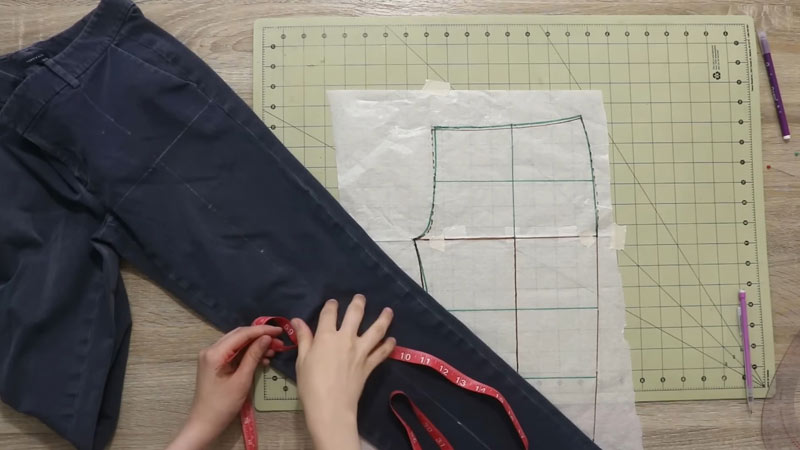
How to Copy Pants Pattern From a Pair of Pants?
Copying a pattern from a pair of pants is a useful skill for those interested in sewing or fashion design.
Whether you want to recreate a favorite pair of pants, adjust the fit, or use the pattern as a base for a new design, the process involves careful observation and precise measurements.
Here’s a step-by-step guide on how to copy a pair of pants pattern:
Materials Needed:
- Pair of Pants.
- Tracing Paper or Pattern Paper.
- Pencil and Eraser.
- Ruler and Measuring Tape.
- Scissors.
- Pins.
Step-by-Step Guide:
Choose the Right Pair of Pants

When selecting the pair of pants for your pattern, consider the fit and style you want to replicate.
Ensure the pants are in good condition and clean, as accurate measurements depend on the pants maintaining their original shape.
If possible, choose a pair that is not overly stretchy or distorted, as this can affect the precision of your pattern.
Take note of any distinctive features like pocket styles, pleats, or unique seam placements that contribute to the overall design.
Prepare Your Workspace
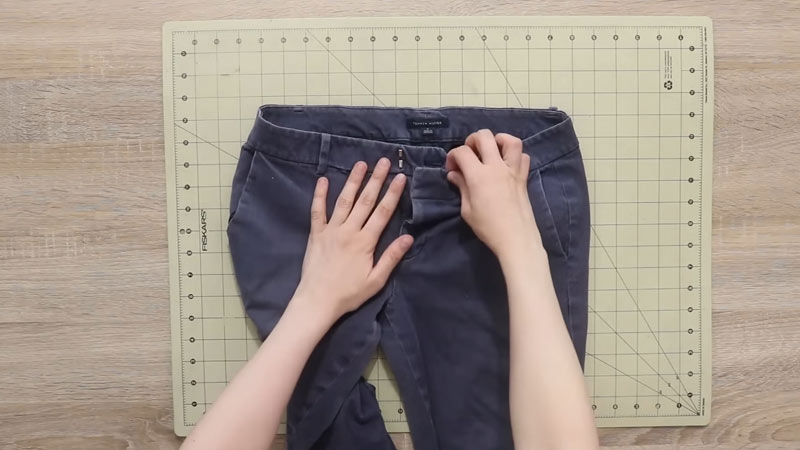
Creating an organized and clean workspace is crucial for an accurate pattern-making process.
Lay out a flat surface larger than the pants to accommodate the tracing paper or pattern paper.
Having a dedicated and clutter-free area will make it easier to trace the details of the pants accurately.
Ensure you have all the necessary tools and materials within reach to avoid disruptions while working on your pattern.
Turn the Pants Inside Out
Turning the pants inside out is a crucial step in pattern copying. This allows you to trace the seams, darts, and other construction details more easily.
By working with the inside of the pants, you can capture the intricacies of the garment structure, ensuring that your pattern reflects the actual construction rather than just the external appearance.
Flatten and Smooth the Pants
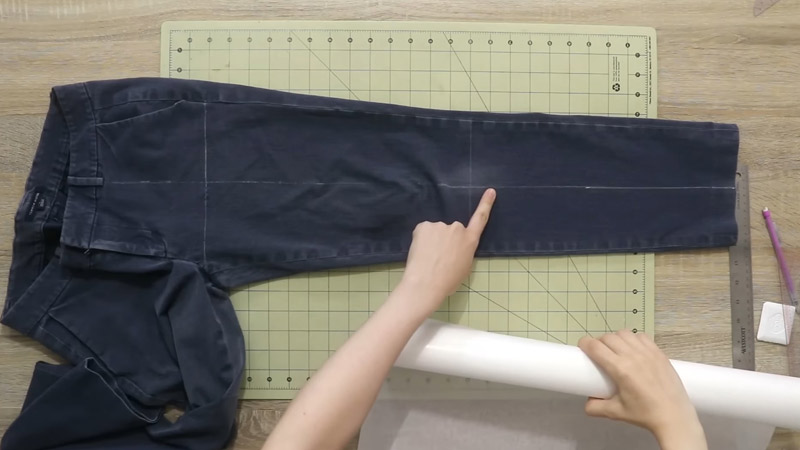
Before tracing, take the time to flatten and smooth the pants on the paper. This step is essential for accurately capturing the shape and structure of each panel. Smooth out any wrinkles, folds, or bulges that may distort the pattern.
By working on a well-prepared surface, you minimize the risk of inaccuracies in your tracing and ensure a more faithful reproduction of the garment.
Trace Each Panel
With the pants inside out and smoothed on the paper, start tracing each panel separately. Begin with the larger sections like the front and back panels of the legs and the waistband.
Pay close attention to the curves, seams, and any distinctive features. It can be helpful to use a pencil for tracing, allowing you to make adjustments and corrections as needed.
Be meticulous in your approach to ensure that the traced pattern accurately reflects the dimensions and details of each part of the pants.
Mark Seams and Darts
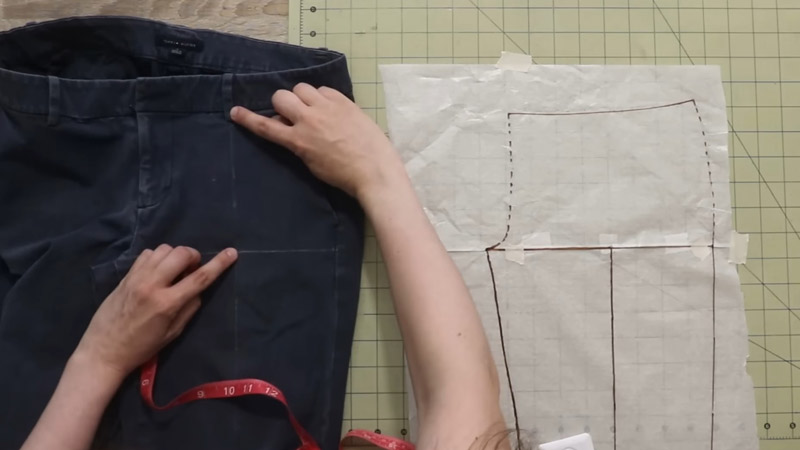
As you trace each panel onto the paper, pay close attention to the construction details.
Mark the seam lines with a different type of line or color to distinguish them from the rest of the pattern. Additionally, identify and mark any darts or pleats present in the original pants.
Note the locations of pockets, belt loops, and other design elements that contribute to the overall aesthetic and functionality of the garment. These markings will serve as crucial guides when you later cut and sew the fabric.
Add Seam Allowance
After tracing all the panels, it’s time to add seam allowances. Seam allowance is the extra fabric along the edges of each pattern piece that allows for sewing the pieces together.
A common seam allowance is 1/2 inch, but you can adjust this based on your preference and the type of garment. Add the seam allowance consistently along each edge of the traced pattern.
This step is essential for ensuring that your fabric pieces align properly when stitched together.
Double-Check Measurements
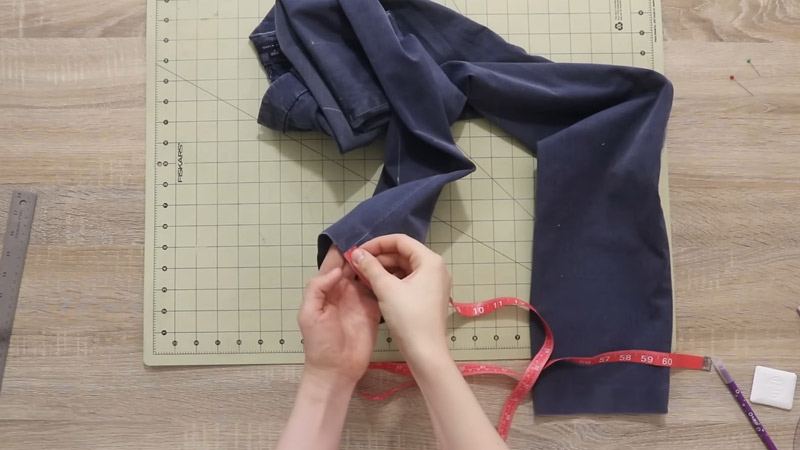
Before proceeding further, take the time to double-check your measurements. Measure key points such as the waist, hip, inseam, and outseam to ensure they match the original pants and meet your desired specifications.
Consistent and accurate measurements are crucial for achieving a well-fitted final garment. If there are discrepancies, reevaluate your tracing and make adjustments as needed.
Cut Out the Paper Pattern
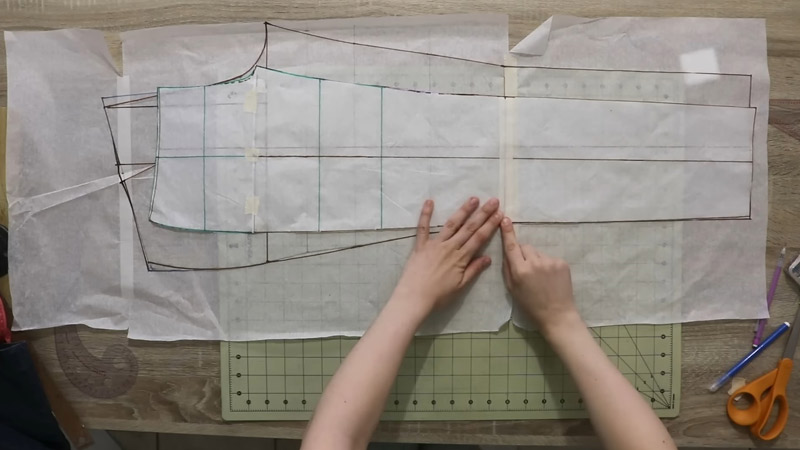
With seam allowances added and measurements confirmed, carefully cut out the paper pattern along the traced lines. Use sharp scissors to ensure clean edges and maintain accuracy.
Precision during this step is vital, as any inaccuracies in the pattern will be replicated in the fabric pieces.
Test the Pattern
Before cutting your fabric, create a test garment using inexpensive fabric. This step allows you to assess the fit and make any necessary adjustments to the pattern without wasting your final fabric.
Sew the test garment following the same instructions you will use for the actual pants. Pay attention to how the fabric drapes and whether any alterations are needed for a better fit.
Transfer Pattern to Fabric
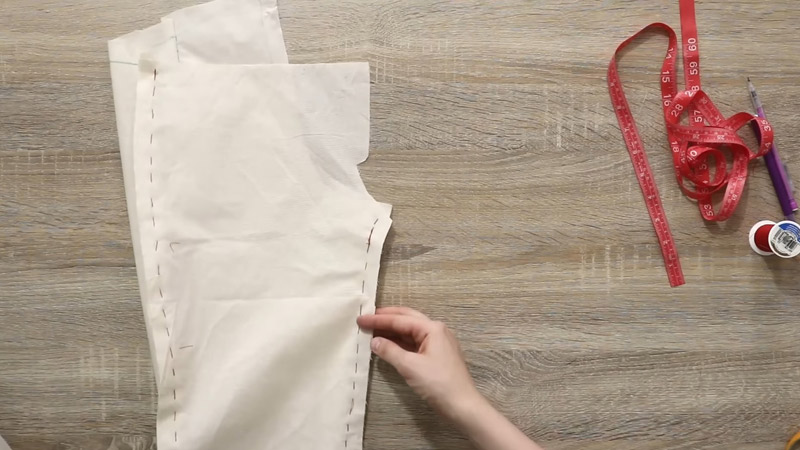
Once satisfied with the fit of the test garment, transfer the pattern to your chosen fabric. Pin the pattern pieces onto the fabric and carefully cut around them, ensuring that you maintain the added seam allowances.
Take care to match any pattern or grain line markings on the fabric with those on the pattern pieces.
Sew the Pants
Follow the pattern instructions to sew the pants together. Pay close attention to the marked seam lines, darts, and other details.
Be precise with seam allowances, and press seams as needed to achieve a polished final result. Following these steps will help you successfully replicate the style and fit of your original pair of pants.
Tailors Who Copy Clothes
Tailors who specialize in copying clothes play a significant role in the fashion and garment industry.
These skilled professionals are adept at replicating existing garments, creating custom patterns, and ensuring that the newly crafted pieces closely resemble the original items.
Here’s an exploration of tailors who specialize in copying clothes:
Expertise and Craftsmanship
Tailors who copy clothes possess a high level of expertise and craftsmanship. They have an acute understanding of garment construction, fabric types, and sewing techniques.
This expertise enables them to analyze and replicate intricate details, stitching patterns, and design elements present in the original clothing.
Understanding Client Preferences
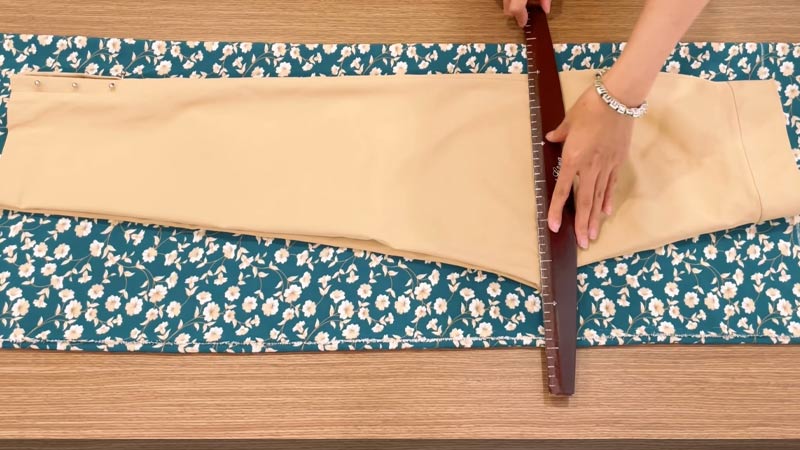
Tailors in this niche often work closely with clients to understand their preferences and requirements.
Whether it’s replicating a favorite garment, adjusting the fit, or recreating a specific style, these tailors prioritize customer input to ensure the final product meets the client’s expectations.
Custom Pattern Making
Copying clothes involves creating custom patterns that mirror the original garment’s design and structure.
Tailors carefully study the seams, darts, pleats, and any unique features of the clothing.
They may use various techniques such as disassembling the original garment, flat pattern drafting, or draping on a mannequin to create an accurate pattern.
Attention to Detail
The success of replicating clothes lies in the tailor’s attention to detail. Every stitch, seam, and embellishment is meticulously examined and replicated.
This level of precision ensures that the copied garment maintains the same aesthetic appeal as the original.
Fabric Selection
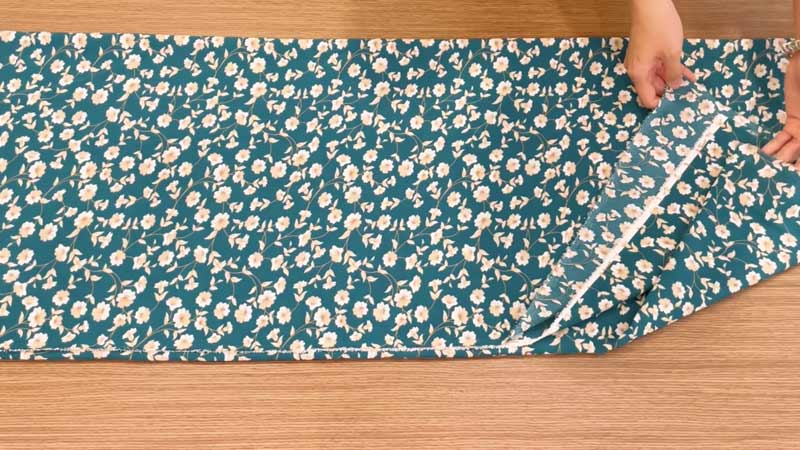
Tailors who specialize in copying clothes also pay close attention to fabric selection. Choosing the right type of fabric is crucial for achieving the same look, feel, and drape as the original garment.
Tailors may offer recommendations based on the client’s preferences and the availability of suitable fabrics.
Alterations and Adjustments
In addition to precise copying, these tailors excel at making alterations and adjustments to cater to the client’s body shape and preferences.
They understand the importance of a well-fitted garment and can modify patterns to achieve the desired fit while retaining the essence of the original design.
Confidentiality and Trust
Clients often entrust tailors who copy clothes with their favorite or unique garments, which may hold sentimental value.
Tailors in this niche understand the importance of maintaining confidentiality and building trust with their clients. This trust is crucial for repeat business and positive word-of-mouth referrals.
Quality Assurance
Tailors focused on replicating clothes prioritize quality at every stage of the process.
From pattern making to fabric selection and stitching, they aim to deliver a finished product that not only mirrors the original but also meets high standards of durability and craftsmanship.
Collaboration with Designers and Brands
These tailors may collaborate with fashion designers or brands for special projects. They contribute their expertise in replicating or modifying existing designs, helping designers recreate popular styles or make adjustments to cater to different markets.
The Arthur Pants pattern is a whimsical pant pattern that combines the classic comfort of wide-legged pants with dramatically shaped side seams and a tapered hem.
The pattern is designed by Sew Liberated in collaboration with designer Debra Weiss of Specks and Keepings.
The pattern is available for purchase as a digital PDF download from Sew Liberated’s website, Etsy, and EWE fine fiber goods.
The pattern includes sizes 0-30 and offers two options for the waistband: a fly front with an elastic back waist or a pull-on, fully elastic waist.
The pattern comes with detailed instructions and a video tutorial that walks you through durable construction techniques, including flat-felled and French seams.
To Recap
Mastering the art of copying a pattern from a pair of pants is not just a practical skill but a gateway to personalized fashion endeavors.
The careful selection of the right pair, meticulous tracing of seams, and the thoughtful addition of seam allowances contribute to the creation of an accurate and versatile pattern.
Double-checking measurements ensure a customized fit, while the process of transferring the pattern to fabric and sewing the final garment brings the envisioned design to life.
Whether recreating a beloved pair or innovating with new styles, this skill empowers individuals to express their creativity, fostering a deeper connection to the garments they craft with precision and care.
Leave a Reply